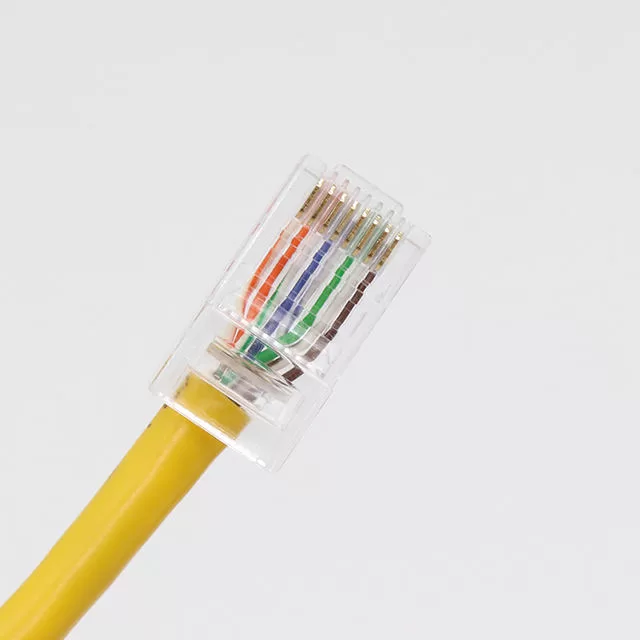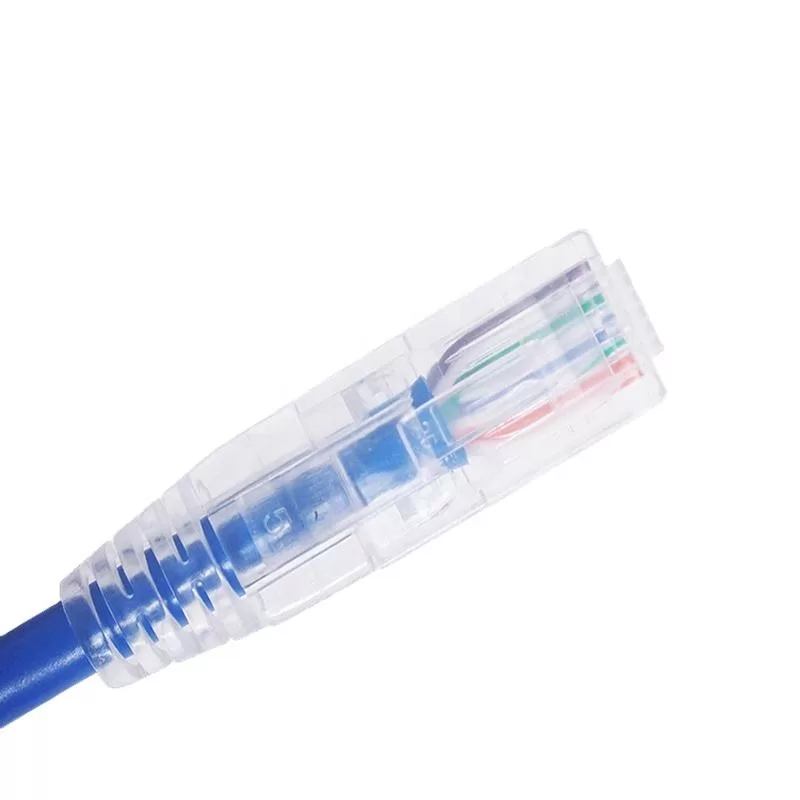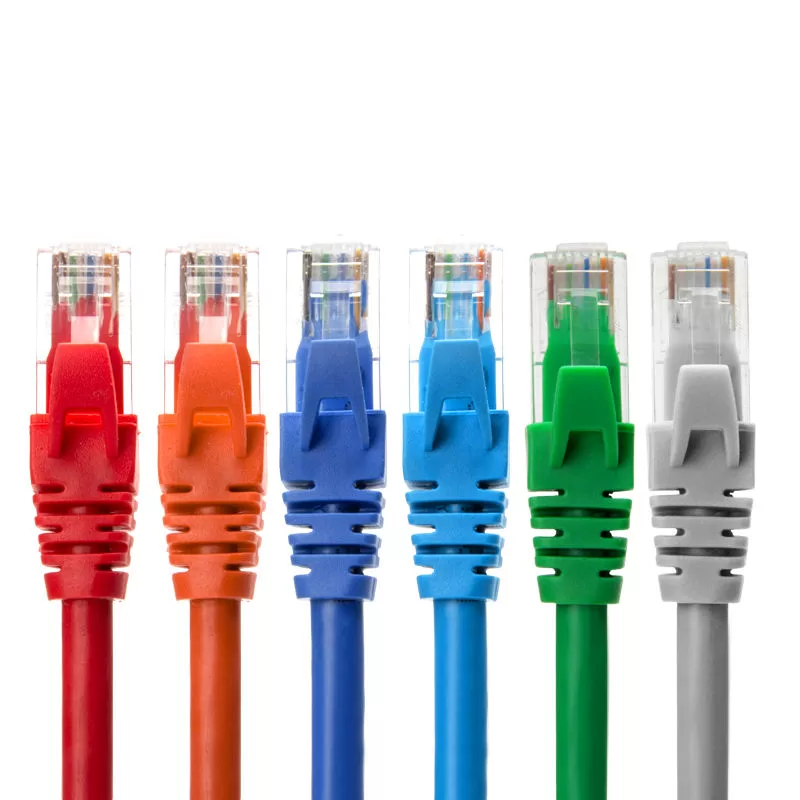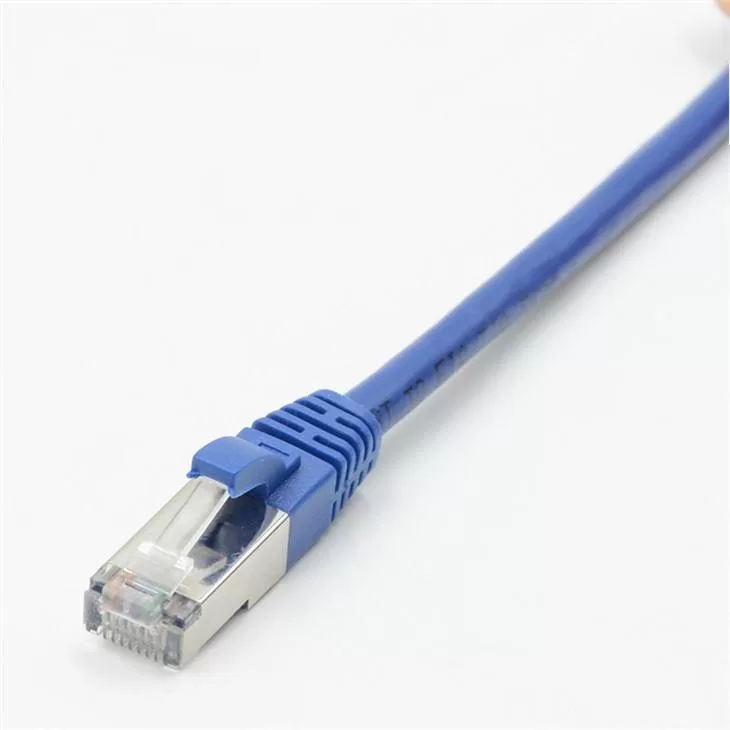When upgrading your Ethernet network, choosing the right patch cable can significantly affect performance, reliability, and future scalability. Among the most common choices are Cat5e Und Cat6a cables. This guide dives into a head-to-head comparison of Cat5e vs Cat6a, covering speed, shielding, bandwidth, cost, and use cases, to help you decide which one best suits your network needs.
Table of contents
- What Are Cat5e and Cat6a Patch Cables?
- 1. Speed & Performance: Gigabit vs Multi-Gig
- 2. Bandwidth Capacity
- 3. Cable Construction & Shielding
- 4. Maximum Distance and Data Integrity
- 5. Crosstalk & Interference Control
- 6. Installation & Flexibility
- 7. Cost Comparison: Budget vs Long-Term Value
- 8. Backward Compatibility
- 9. PoE (Power over Ethernet) Support
- 10. Standards & Certification
- Use Cases: When to Use Cat5e vs Cat6a
- Future-Proofing: Is Cat6a Worth It?
- FAQs: Cat5e vs Cat6a
- Final Thoughts
What Are Cat5e and Cat6a Patch Cables?
Before diving into comparisons, let’s define both categories:
Cat5e (Category 5 Enhanced)

- Geschwindigkeit: Up to 1 Gbps
- Bandwidth: 100 MHz
- Maximum Distance: 100 meters (328 feet)
- Abschirmung: Typically unshielded (UTP)
- Use Case: Home networks, VoIP, basic data transfers
Cat6a (Category 6 Augmented)

- Geschwindigkeit: Up to 10 Gbps
- Bandwidth: 500 MHz
- Maximum Distance: 100 meters for 10GBASE-T
- Abschirmung: Usually shielded (F/UTP, S/FTP)
- Use Case: Data centers, enterprise networks, high-performance applications
1. Speed & Performance: Gigabit vs Multi-Gig
One of the most critical differences in the Cat5e vs Cat6a debate is transmission speed.
- Cat5e supports speeds up to 1 Gbps, suitable for most home networks and small offices.
- Cat6a handles 10 Gbps, making it ideal for high-speed file transfers, server connections, and future-proofing.
If your infrastructure involves video streaming, IP surveillance, or cloud-based applications, Cat6a is the better investment.
2. Bandwidth Capacity
- Cat5e supports 100 MHz, enough for general-purpose networking.
- Cat6a supports 500 MHz, offering more capacity for multi-stream data, better performance over longer runs, and less signal degradation.
Higher bandwidth directly correlates with better performance in busy networks with high data throughput.
3. Cable Construction & Shielding
Cat5e

- Unshielded twisted pair (UTP) is most common.
- Lightweight and easy to install.
- Minimal protection against EMI (electromagnetic interference).
Cat6a

- Shielded variants (F/UTP or S/FTP) reduce crosstalk and EMI.
- Heavier and thicker due to extra insulation.
- Requires proper grounding for optimal performance.
Abschluss: In environments with heavy electronic noise or close cable proximity, Cat6a’s shielding provides more reliable transmission.
4. Maximum Distance and Data Integrity
Both cable types support up to 100 meters, but the key difference lies in data integrity:
- Cat5e: 1 Gbps transmission at 100 meters with minimal interference
- Cat6a: Maintains 10 Gbps up to 100 meters, thanks to improved insulation and shielding
For mission-critical systems or high-performance LAN backbones, Cat6a ensures more consistent performance over full distances.
5. Crosstalk & Interference Control
- Cat5e includes limited internal twist enhancements to reduce crosstalk.
- Cat6a features tighter twists and overall shielding, greatly reducing NEXT (Near-End Crosstalk) and AXT (Alien Crosstalk).
Crosstalk is a major source of signal degradation, especially in high-speed environments—another win for Cat6a.
6. Installation & Flexibility
Cat5e
- Thinner and more flexible
- Easier to bend and route
- Ideal for tight spaces and DIY installations
Cat6a
- Thicker jacket and shielding = less flexibility
- More challenging to install in dense cable trays
If ease of installation is a top concern, Cat5e offers convenience. But structured cabling professionals are equipped to handle Cat6a’s rigidity in exchange for performance.
7. Cost Comparison: Budget vs Long-Term Value
Cat5e
- More affordable per meter
- Lower labor and material costs
- Good ROI for small networks
Cat6a
- Higher material and labor costs
- Requires more space in trays and patch panels
- Higher ROI over time due to future-readiness
If you’re investing in infrastructure expected to last 10+ years, Cat6a’s upfront cost pays off in long-term performance and compatibility.
8. Backward Compatibility
Both cable types use RJ45 connectors and are backward compatible:
- Cat6a cables can connect to Cat5e ports and devices, although performance will match the lower standard.
- Ensures a smooth upgrade path without needing to replace all hardware.
9. PoE (Power over Ethernet) Support
Both support PoE, but Cat6a is better equipped for PoE++ (IEEE 802.3bt) which requires more current:
- Cat5e can deliver up to 30W (PoE+)
- Cat6a can deliver up to 90W
This matters for:
- High-powered wireless access points
- PTZ cameras
- Thin client computers
10. Standards & Certification
- Cat5e complies with TIA/EIA-568-B
- Cat6a follows TIA/EIA-568-C.2 and ISO/IEC standards
- Always look for UL-certified and ETL-verified cables to ensure compliance
Use Cases: When to Use Cat5e vs Cat6a
| Scenario | Recommended Cable |
|---|---|
| Basic home internet | Cat5e |
| HD video streaming & VoIP | Cat5e |
| 10G data center backbone | Cat6a |
| Cloud computing and virtualization | Cat6a |
| Smart building / IoT infrastructure | Cat6a |
| Upgrading old networks on a budget | Cat5e |
| New office or enterprise network build | Cat6a |
Future-Proofing: Is Cat6a Worth It?
As more businesses move to cloud-based workflows, multi-gig wireless, and bandwidth-hungry applications, investing in Cat6a ensures that your infrastructure won’t become obsolete in the next 5–10 years.
Even if your current equipment maxes out at 1 Gbps, the move to 2.5G/5G Ethernet and beyond is already underway.
Verdict: Choose Cat6a if you want to:
- Future-proof your building
- Support 10G+ applications
- Ensure strong performance over longer runs
FAQs: Cat5e vs Cat6a
1. Is Cat6a faster than Cat5e?
Yes. Cat6a supports speeds up to 10 Gbps, while Cat5e supports up to 1 Gbps.
2. Can I use Cat6a in a Cat5e network?
Yes. Cat6a is backward compatible with Cat5e hardware and connectors.
3. Which cable is better for PoE?
Cat6a, because it handles higher wattage and has better heat dissipation.
4. Is Cat6a worth the extra cost?
If you need high speeds, longer distances, or plan for future upgrades—yes.
5. Is Cat5e still good for home use?
Yes, for most basic applications like browsing, streaming, and small file transfers.
6. What’s the maximum length for Cat6a?
100 meters for full 10GBASE-T performance, just like Cat5e.
7. Is Cat6a harder to install?
Yes. It’s thicker and stiffer due to shielding, requiring more care and space.
8. Can I mix Cat5e and Cat6a cables?
Yes, but the network performance will default to the lower standard (Cat5e).
9. Does shielding really make a difference?
Yes, especially in electrically noisy environments. Shielding reduces interference and improves signal integrity.
10. Which is more future-proof: Cat5e or Cat6a?
Cat6a. It’s designed to handle 10G speeds and modern high-performance networks.
Final Thoughts
In the battle of Cat5e vs Cat6a, your decision hinges on network demands, installation environment, and future growth. If you’re managing a small, cost-sensitive home or office setup, Cat5e may be enough. But for long-term ROI, superior speed, and future readiness, Cat6a is the clear winner.
If you’re looking to source Cat5e and Cat6a patch cables from a reliable supplier, don’t hesitate to get in touch with us for free quote and free samples.
Our Email: [email protected]
